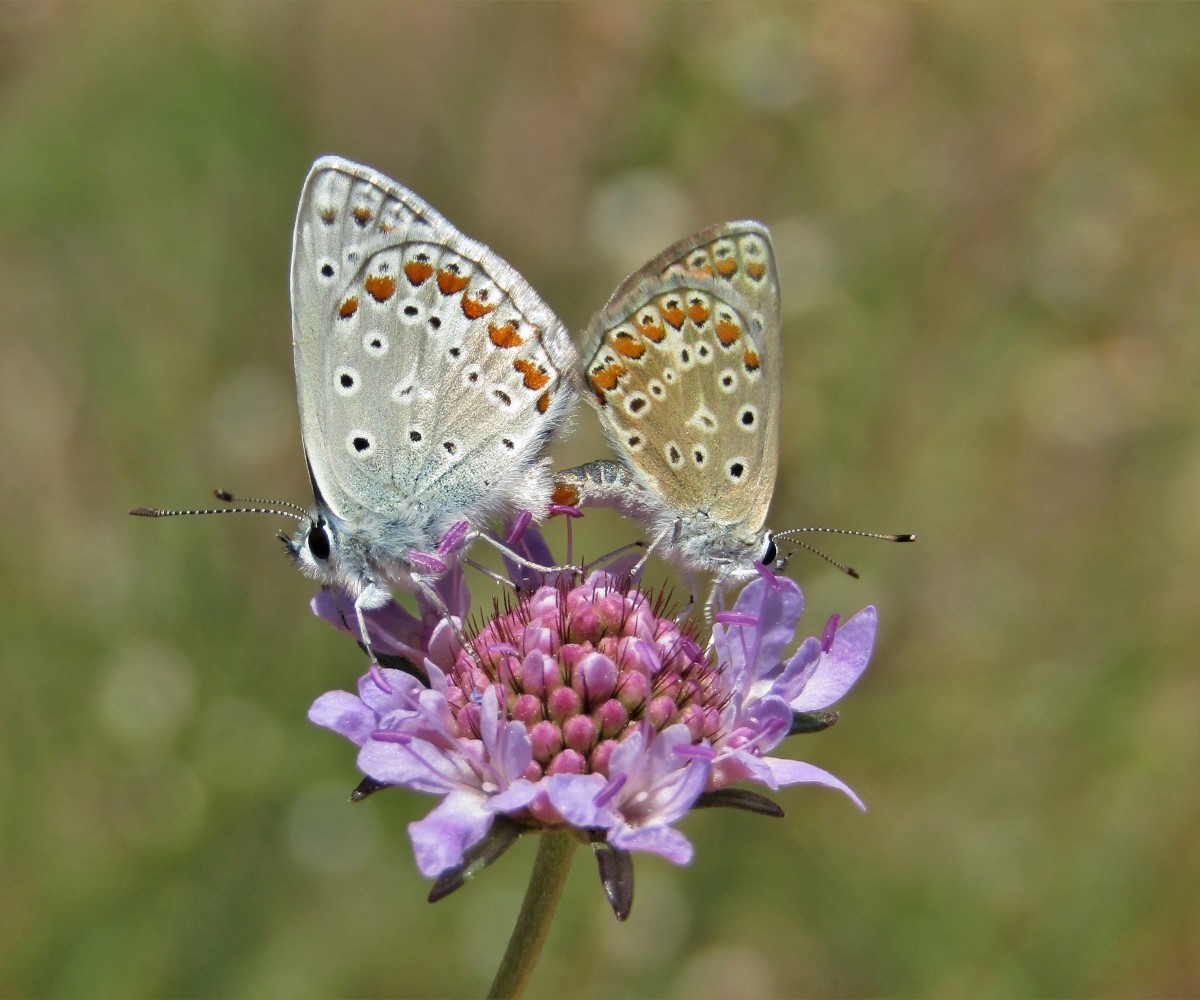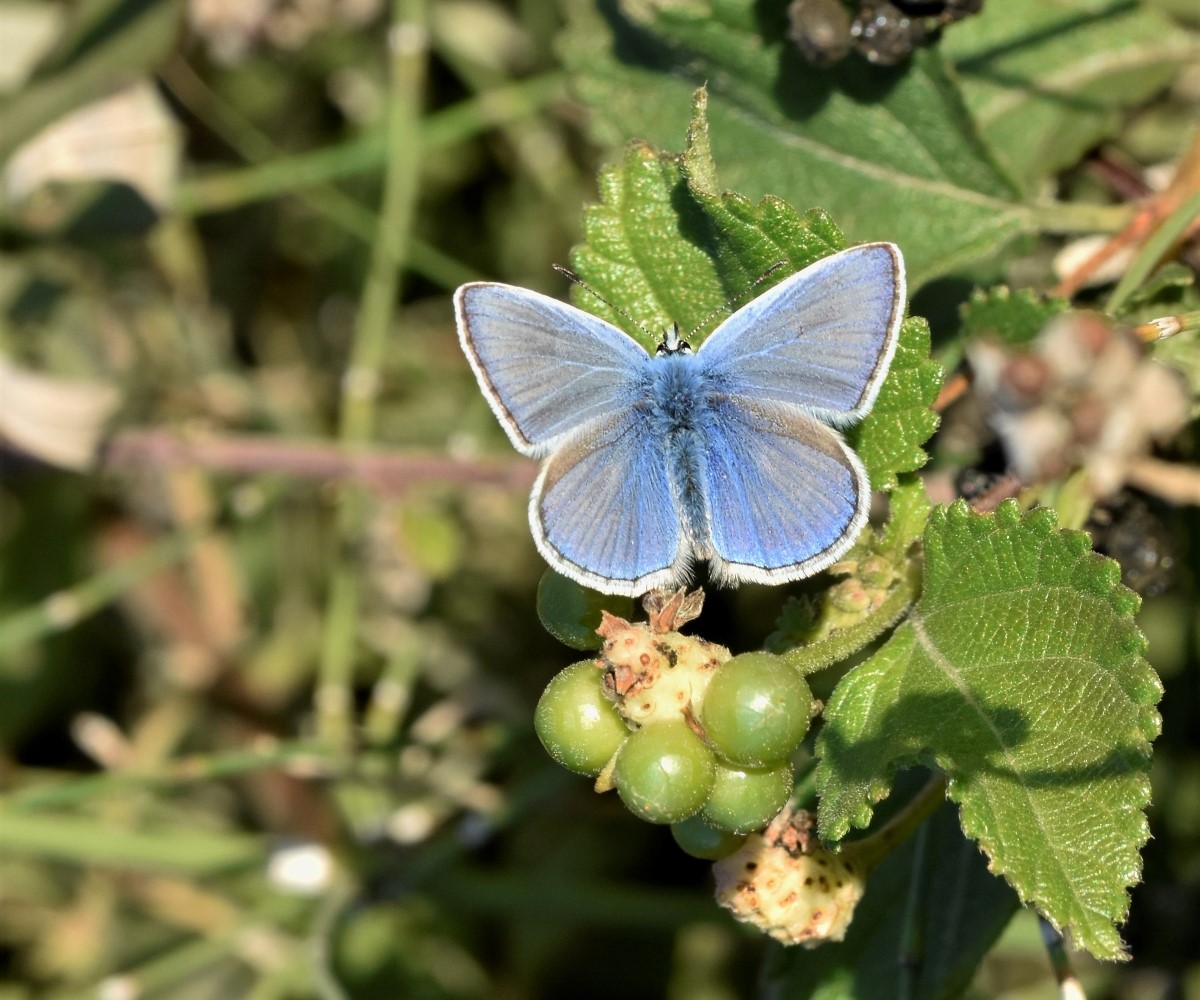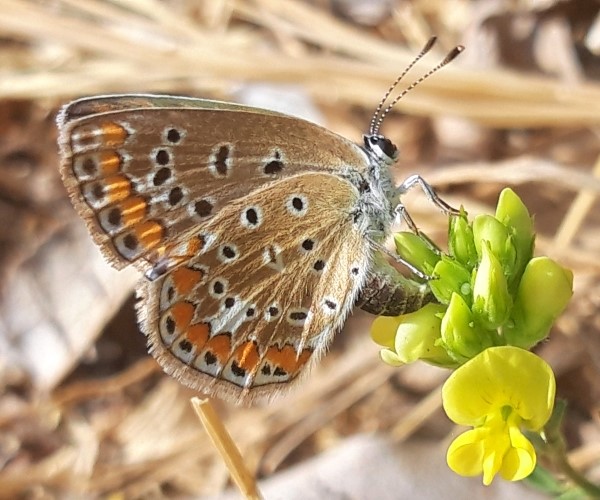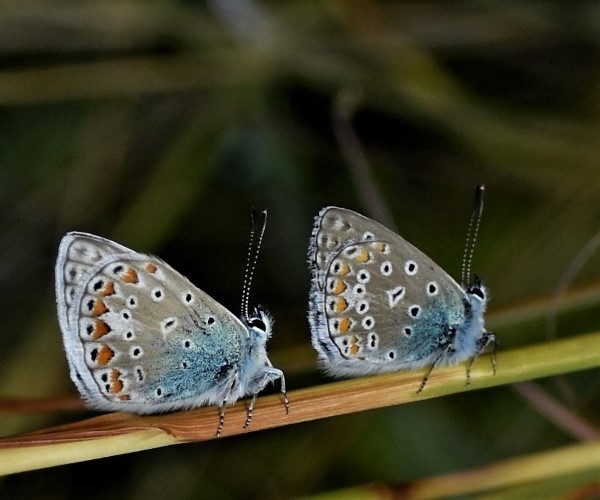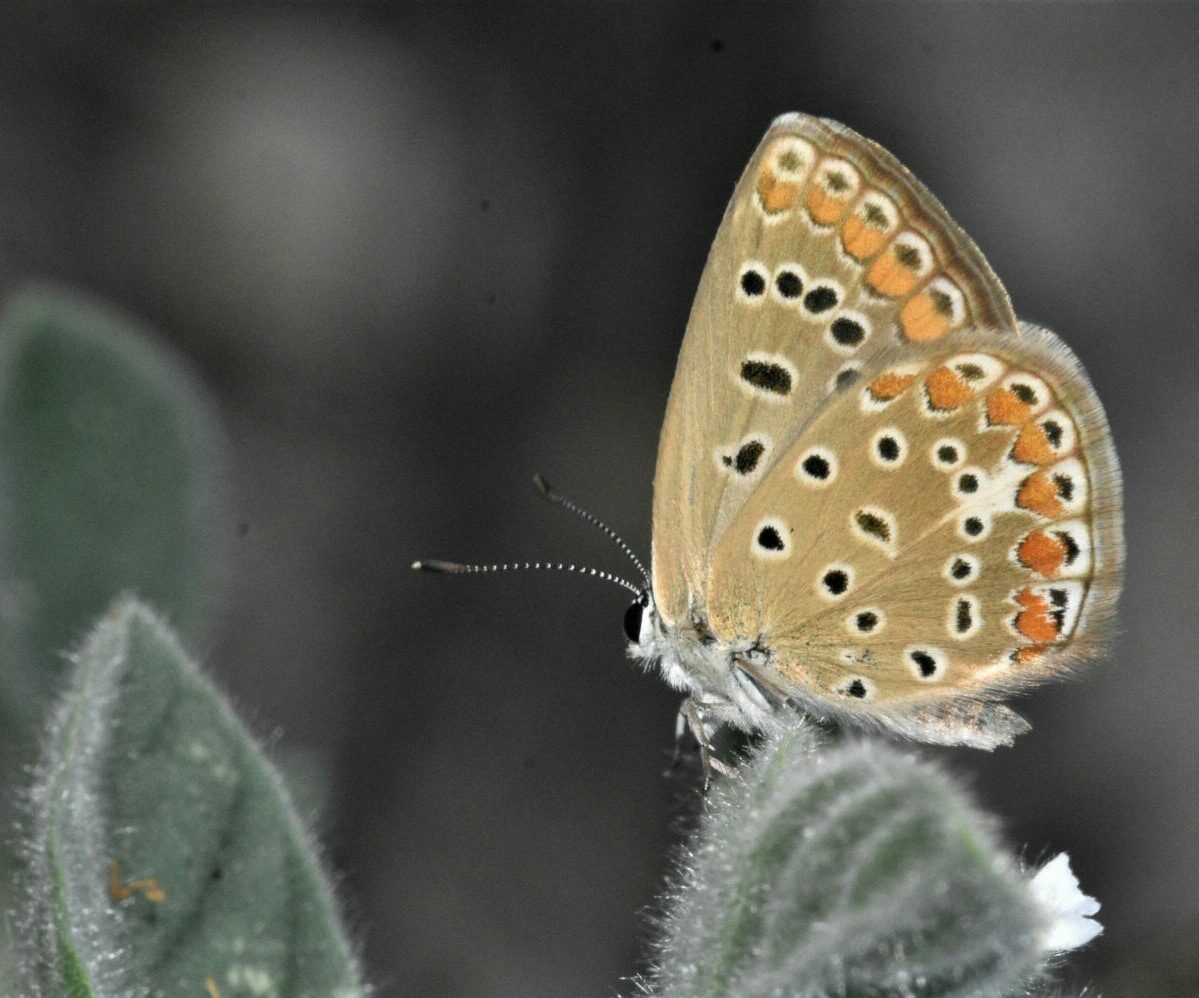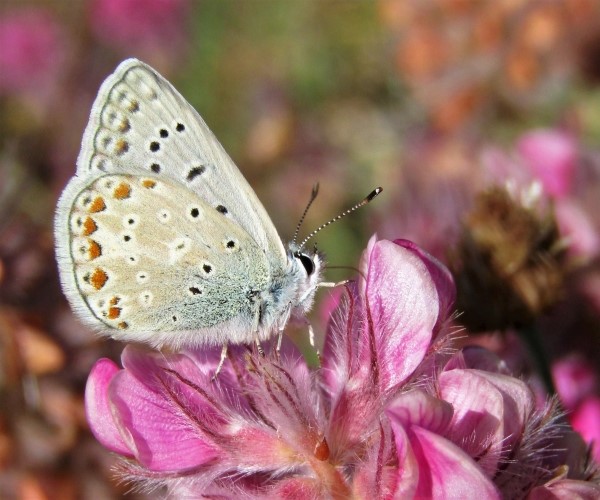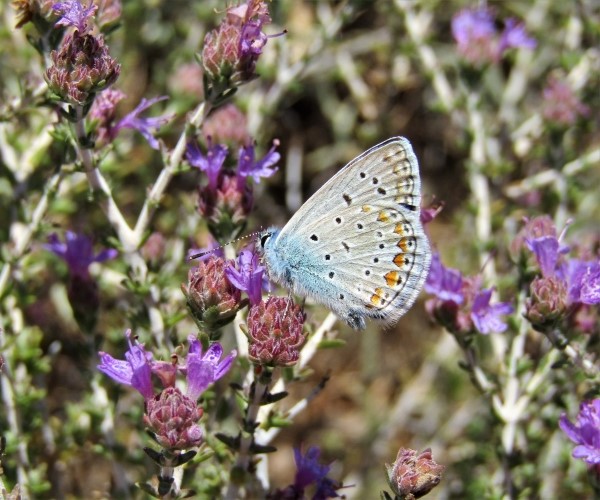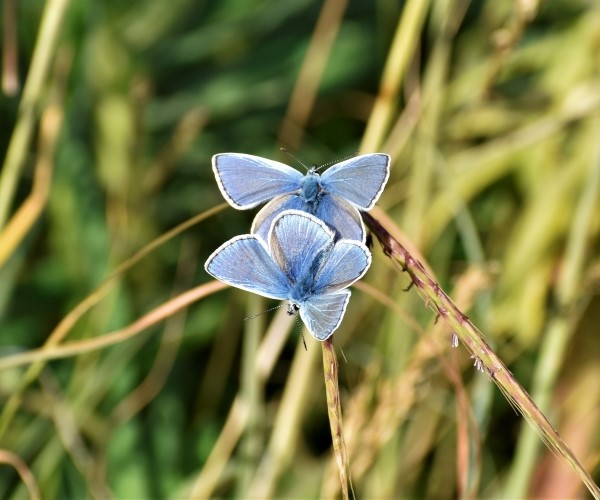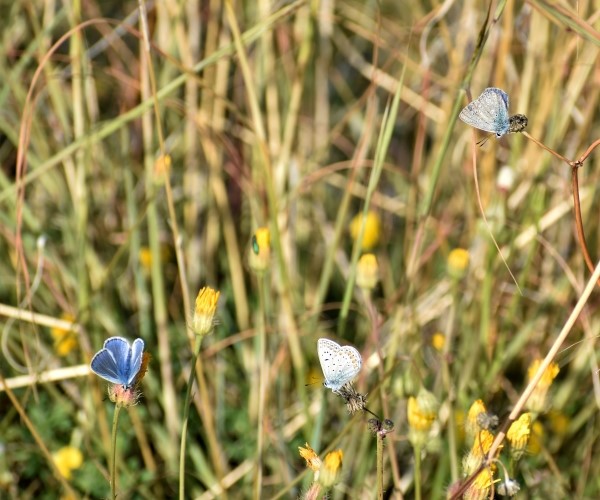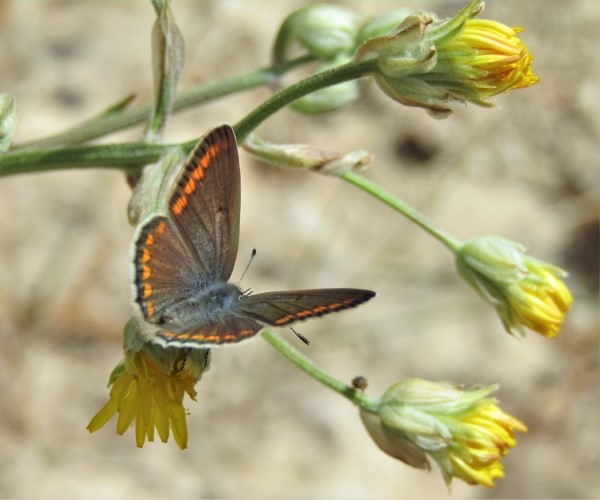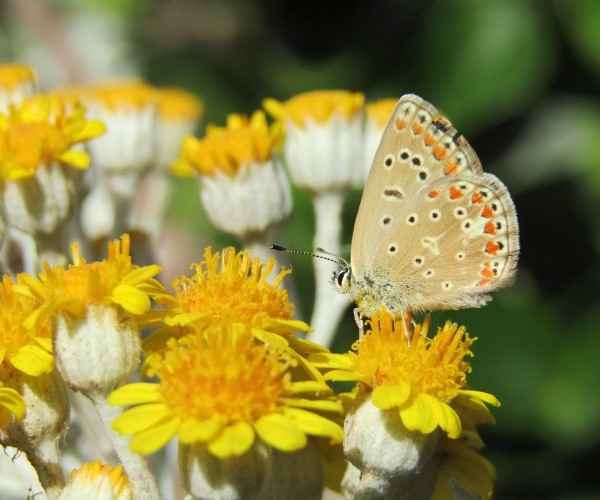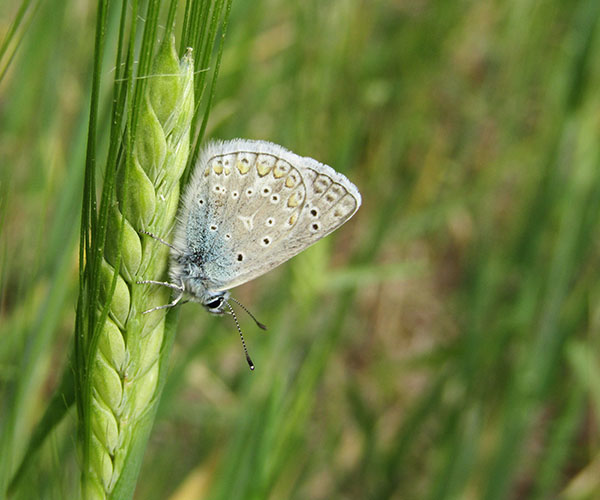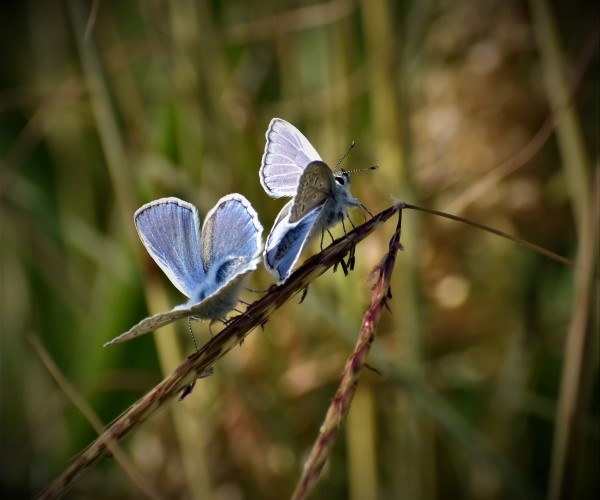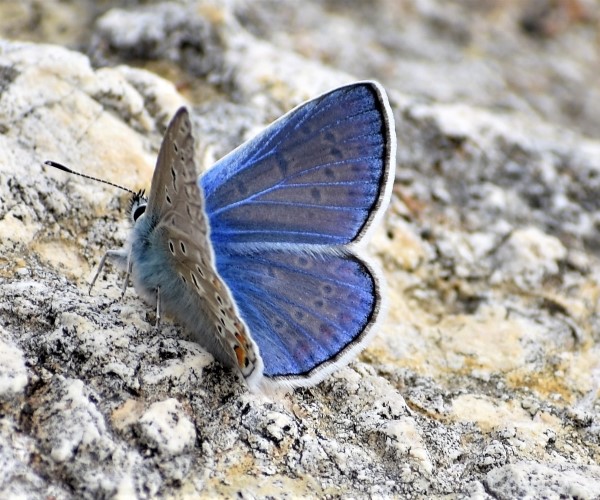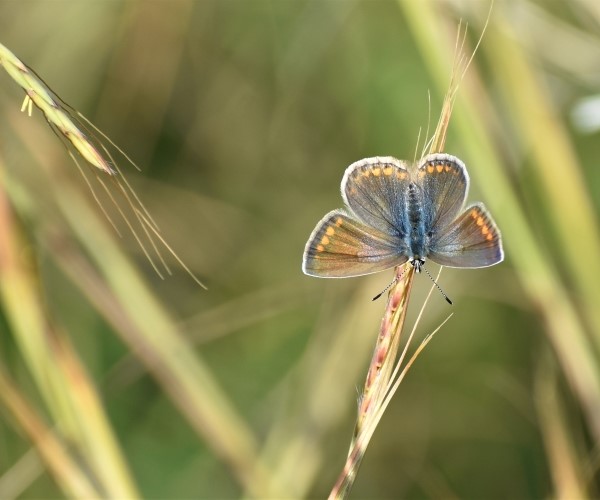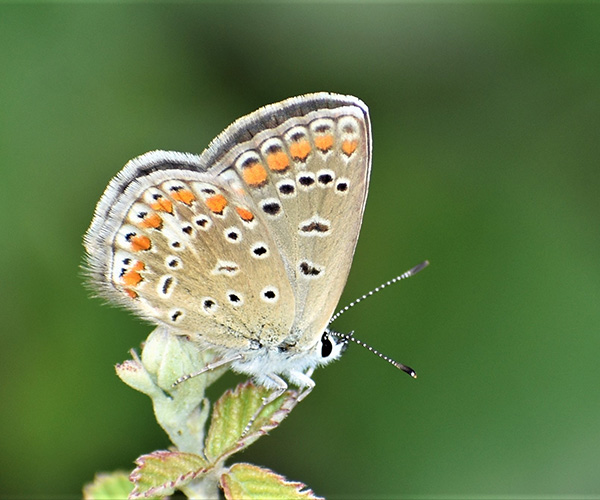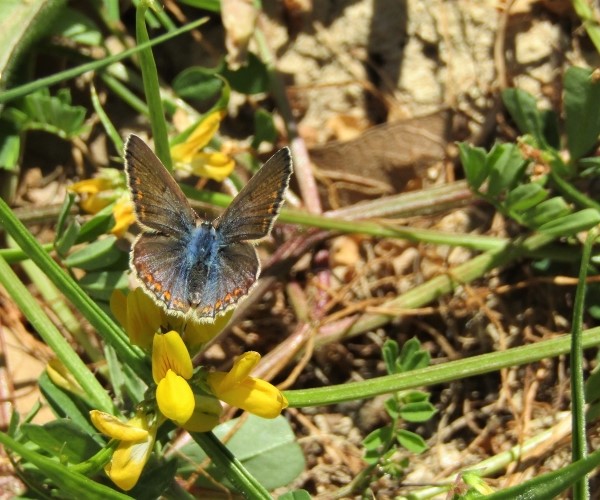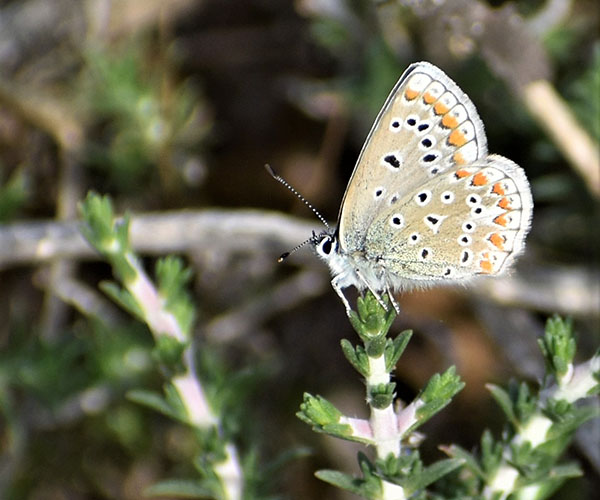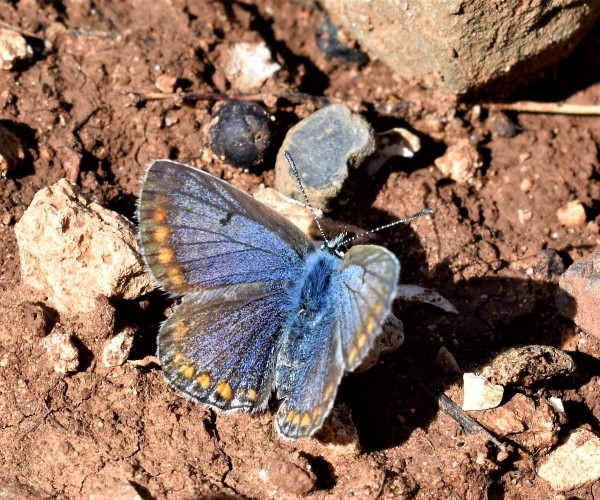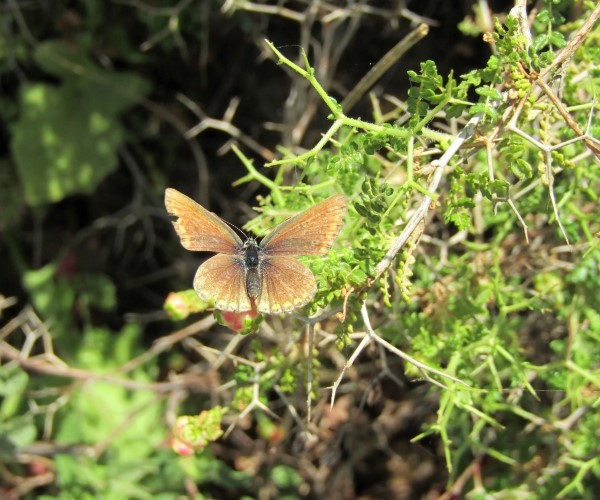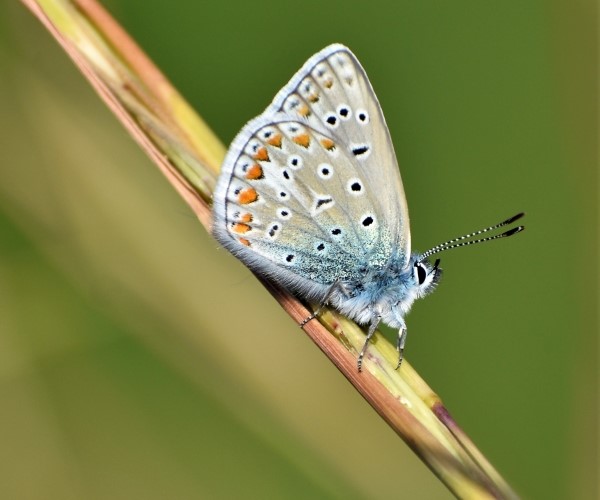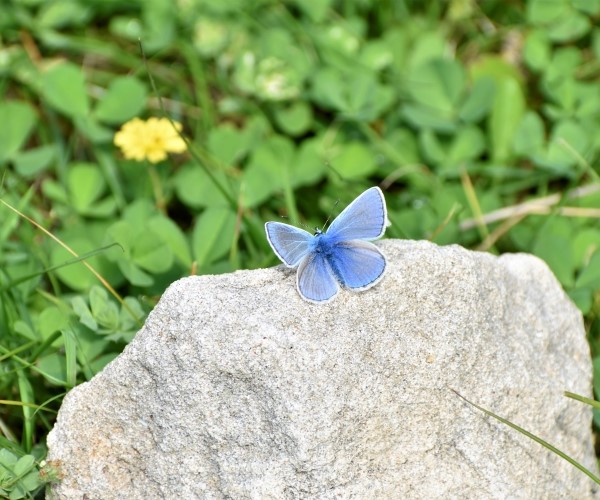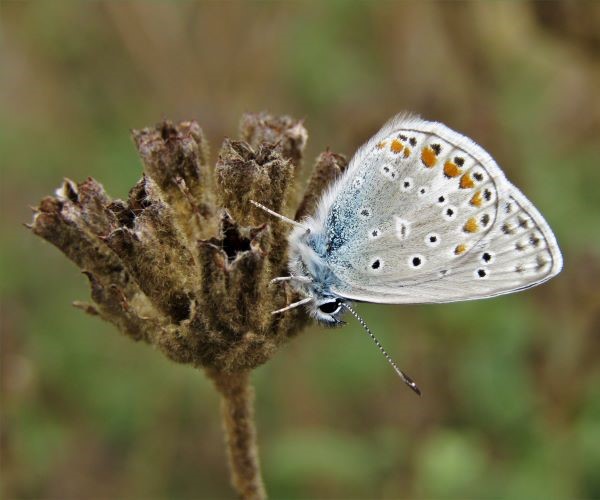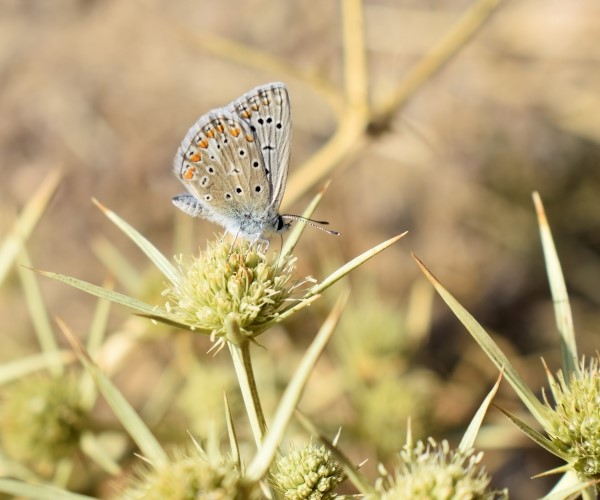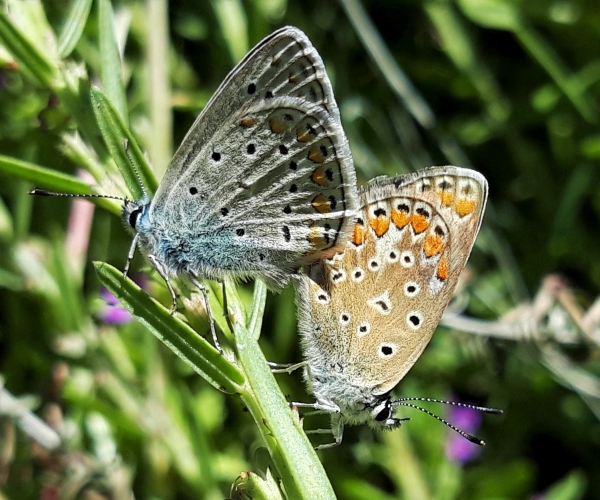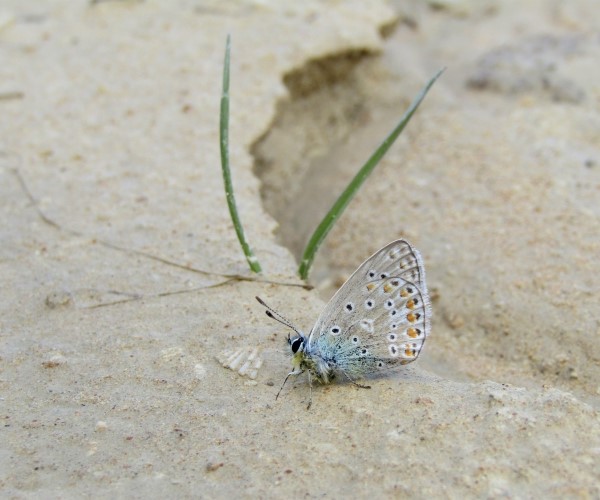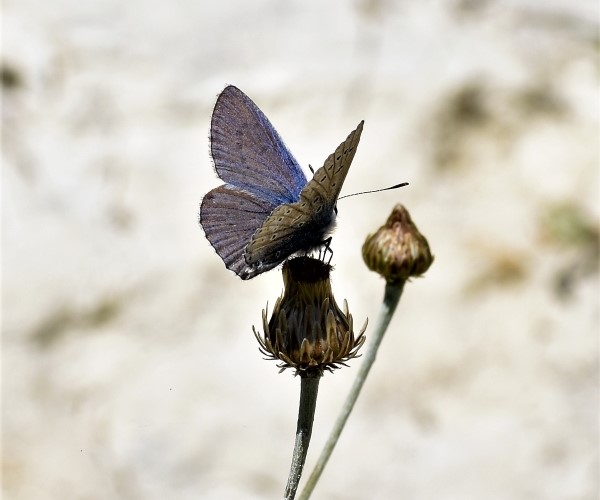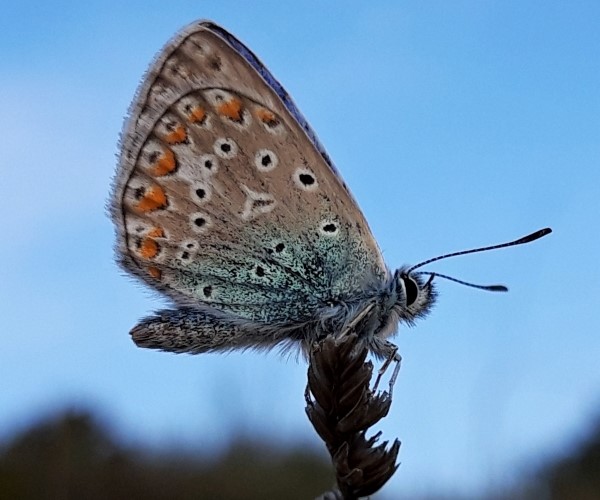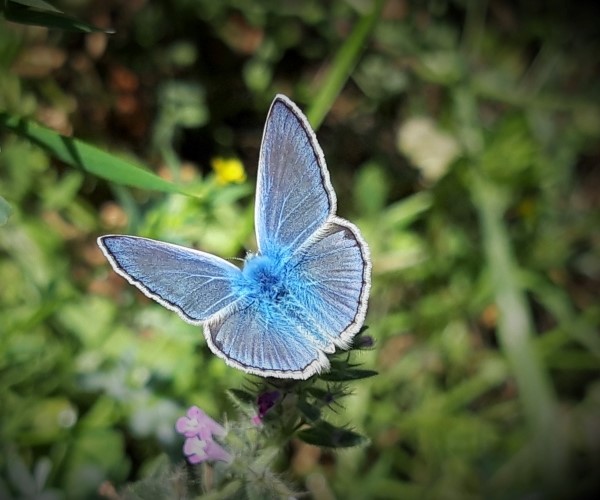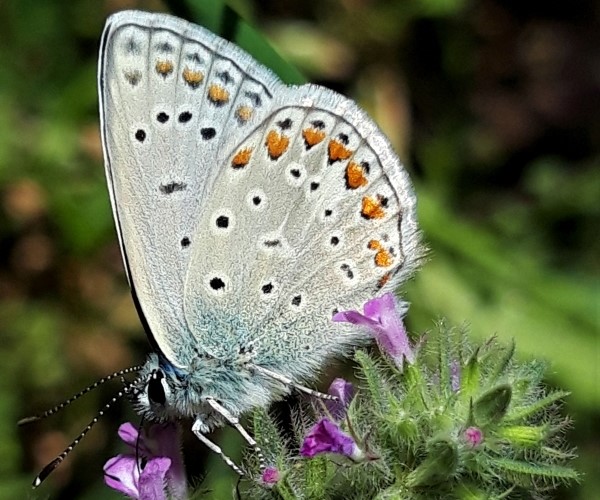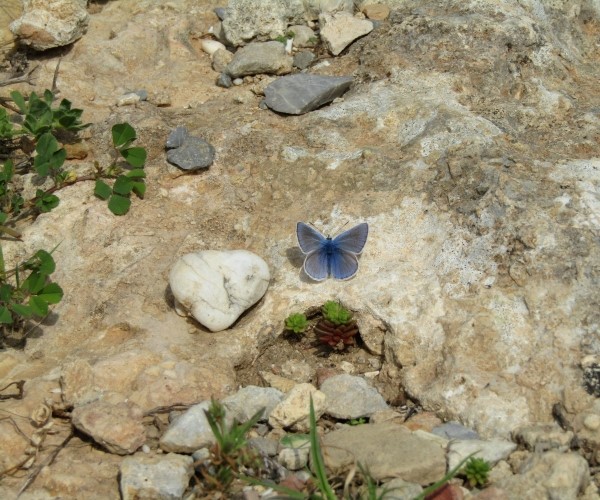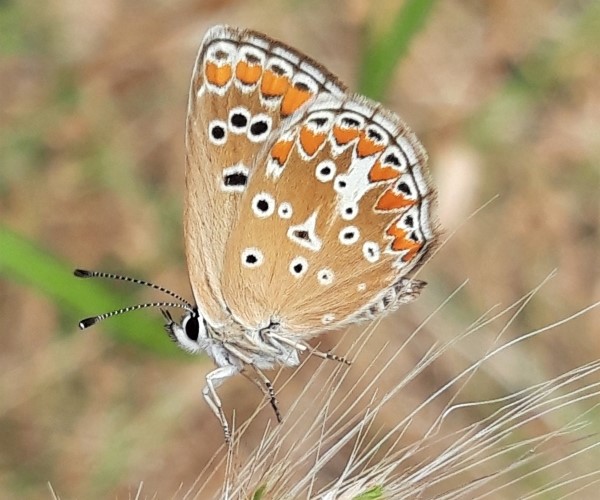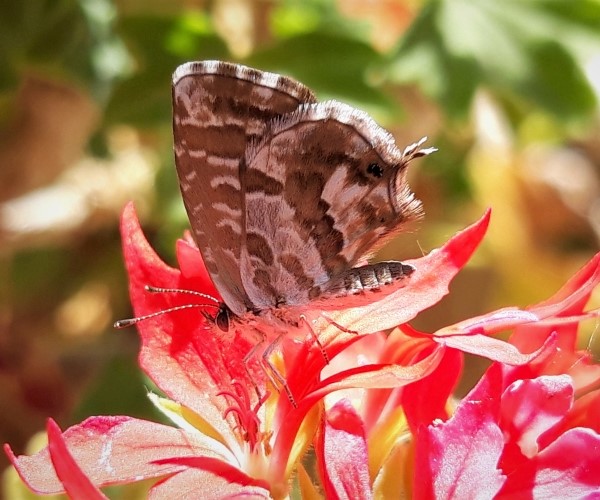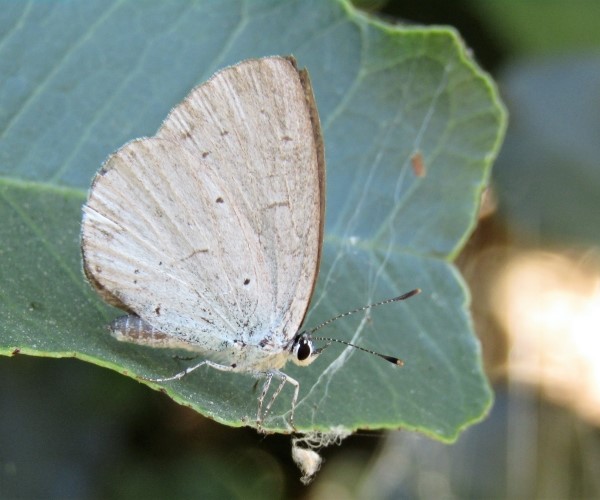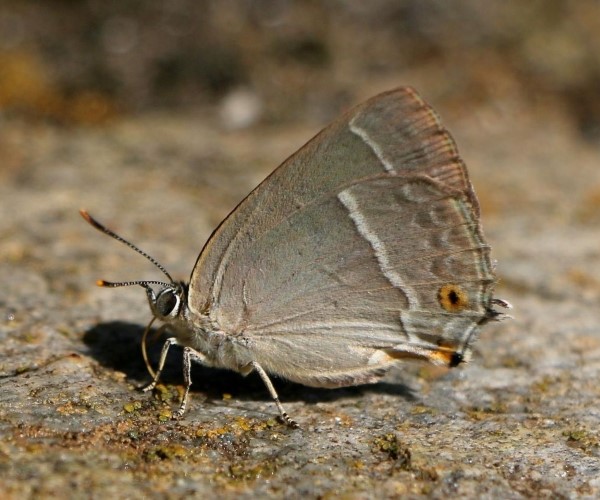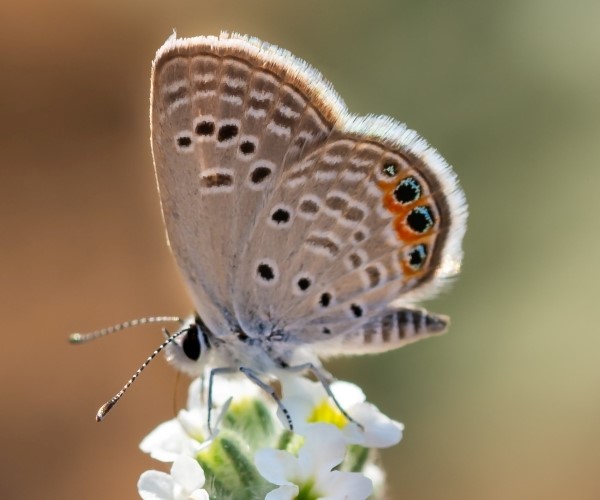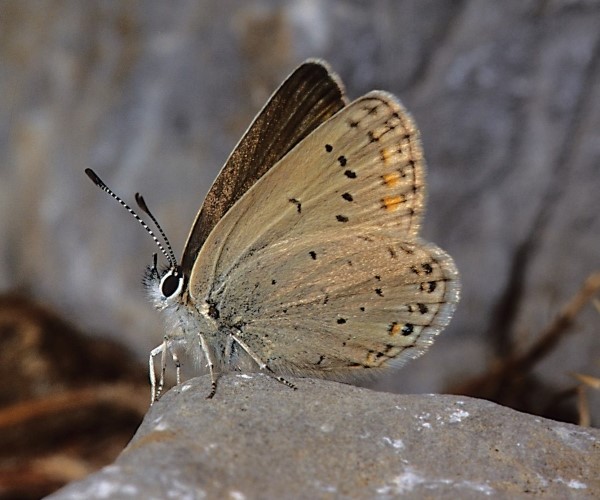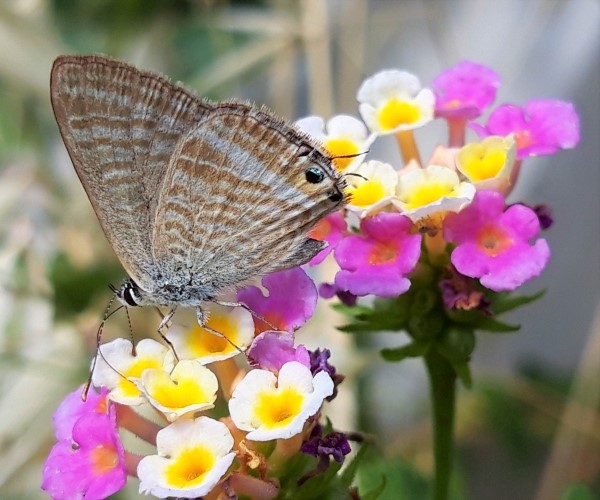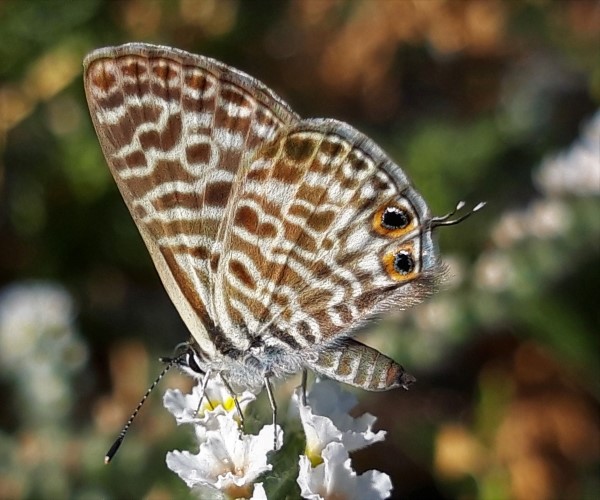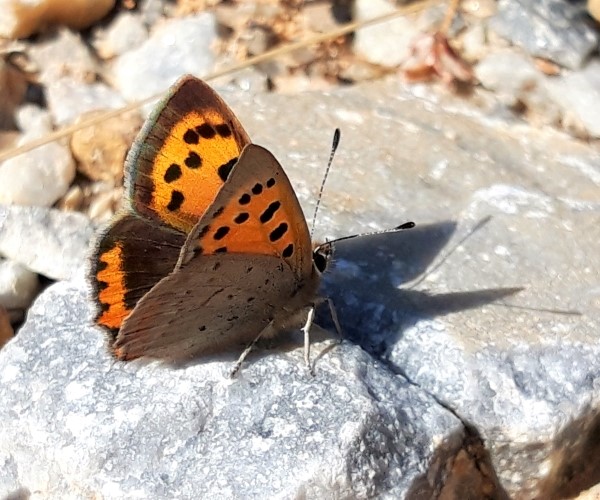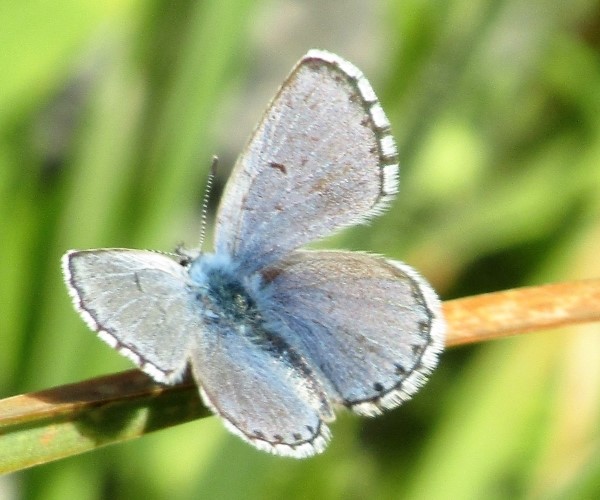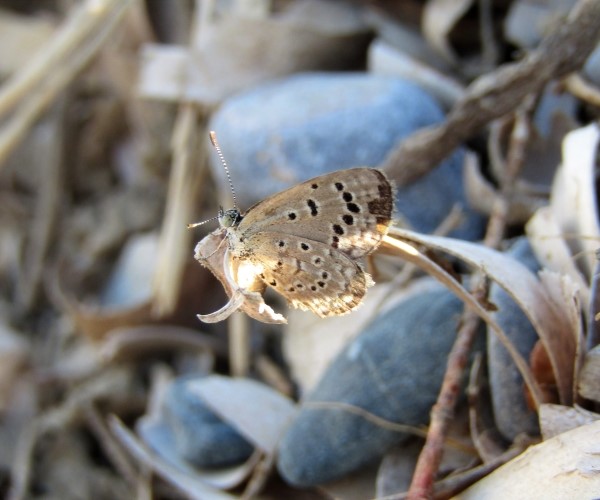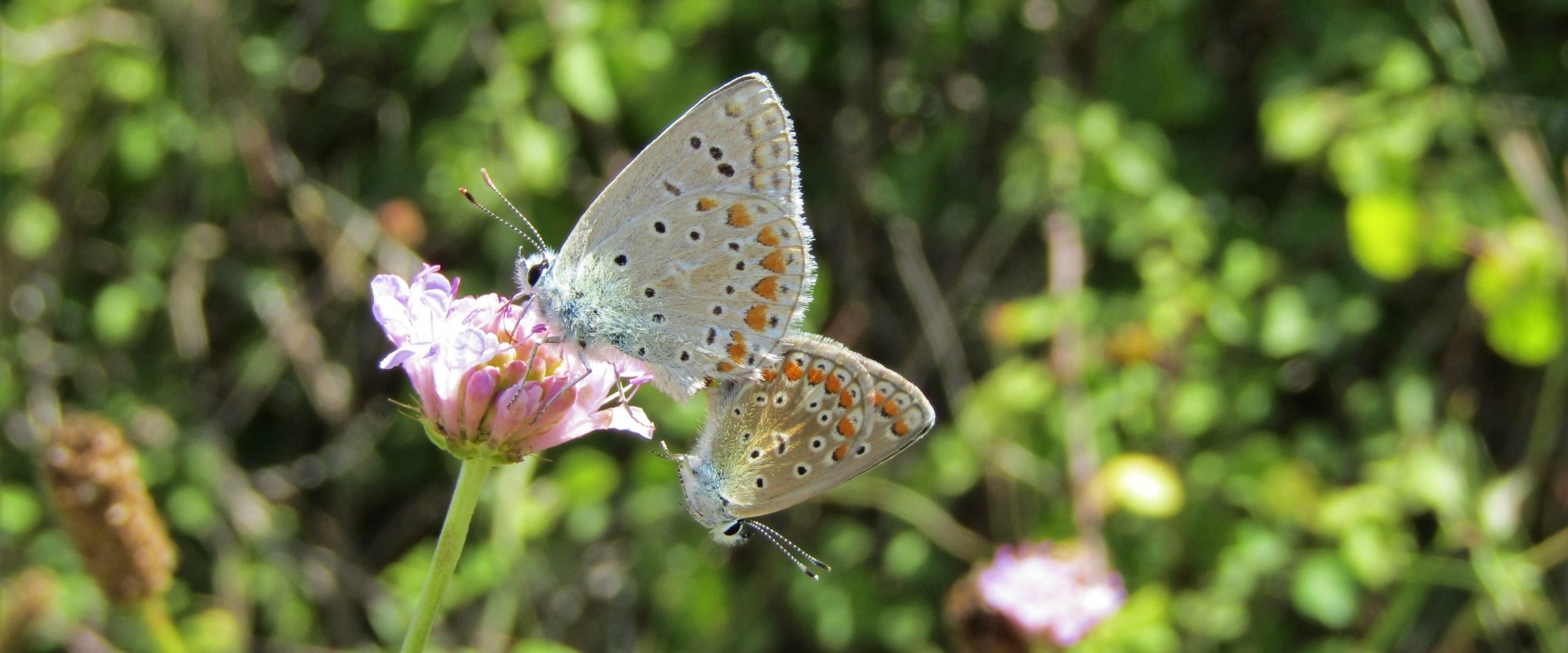
Polyommatus icarus, Crete - photo © K. Bormpoudaki
Polyommatus icarus
BUTTERFLY INFO
Polyommatus icarus is a butterfly of the family Lycaenidae on the island of Crete, Greece.
Scientific name
Polyommatus icarus (Rottemburg, 1775)
Common name
Common Blue
Classification
Family: Lycaenidae > Subfamily: Polyommatinae > Tribus: Polyommatini > Genus: Polyommatus
Wingspan
Male to female: 20-35 mm
Appearance
Upperside, the male butterfly has a blue color with a black marginal border. The female varies from dark brown to almost blue with orange submarginal spots.
Underside, the male has greyish to light blue colors, contrary to the female that is brownish.
Behavior
In weak sunlight conditions male often basks on low herbage, with wings held half-open. In overcast but warm conditions, it sometimes basks with wings fully open. When the weather is warm and sunny it flies actively from flower to flower.
Habitat
Polyommatus icarus in Crete lives in several habitats from sea level to the mountains, in fallow land, glades, meadows, ruderal areas, and waysides.
Food plant
The larva feeds on Fabaceae (Lotus, Trifolium, Trigonella, Astragalus, Ononis) plants.
Flight period
The butterfly flies in 2-3 generations per year. It can be observed almost all year long.
| Jan | Feb | Mar | Apr | May | Jun | Jul | Aug | Sep | Oct | Nov | Dec |
Remarks
The female butterfly can be easily confused with Aricia agestis (Brown Argus), which also occurs in Crete.
Here are some useful tips to spot the difference:
- on the underside forewing, the Polyommatus icarus almost always has an extra black spot (cell spot), which is absent from the Aricia agestis.
- the apex of the forewing of Polyommatus icarus is less rounded than the Aricia agestis
- the orange lunes of Aricia agestis tend to be brighter orange, strongly defined, and larger than in a Polyommatus icarus.
- there is a more intense white streak in the center of the underside of the hindwing of Aricia agestis than in Polyommatus icarus.
Status*
Least Concern (LC)
Polyommatus icarus Distribution Map

Polyommatus icarus location map based on greek butterflies distributions maps by L.N. Pamperis (revised 2021)
